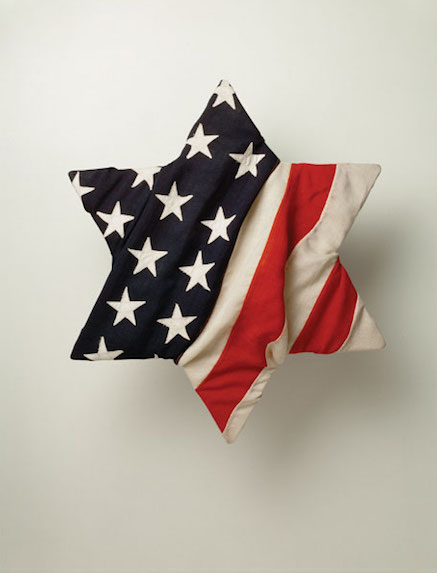



Frankfurt, Germany
Frank Kunert uses miniature building and photography to create his Kleine Welten (“Small Worlds”). Apart from their astounding detail, it is his tentatively surreal photography of these table top creations that demands close inspection. Some views are intended to instill poetic quality, others humor or silent darkness, he says. The worlds he constructs are mostly industrial grey and colored as if by an overcast sky, and unpeopled. Rather, a careful choice of architecture that defines its people, in a lucid state of altered reality.
Kunert works on each miniature for many months before it is captured on film. Everything about the construction is meant for that moment of story creation. The intended punchline is word play or a subtle jab, he says. His work has been exhibited across Germany and in New York… see more on his website, here; watch a video interview here.


Winnipeg, Manitoba
My colleague Adrian and I just met this Giant Water Bug (Lethocerus americanus) on the sidewalk about a block from our downtown office. Frankly, I was shocked that I have never before encountered its ilk in the 38 years I have spent in Canada (including lots of time in swamps and on streams and ponds)… apparently they are also known as Toe Biters (for the painful bites they can inflict on swimmers). Their normal diet consists of insects, tadpoles, salamander, small fish, and snails—and they themselves are a popular food in Thailand.
Who knew?

Rajie (Roger) Cook, U.S.A., 1993
“The Star is a stunningly psychological poster that ignites a chain reaction… the stars on the American flag are five-pointed; here, an American flag is wrapped around the six-pointed Magen David (Hebrew: Star of David), the national political emblem of modern Israel as well as the iconic symbol of Zionism. The Star is boldly set out against a white background with no accompanying text, thereby deliberately focusing the viewer’s attention on the artist’s provocative premise.”
“Cook fuses the U.S. flag and the Star of David to make a political declaration: that Zionism is a significant internal force in American political life, capable of morphing it into a new and alien shape. The poster challenges Americans to review the assumptions that have allowed Zionism to flourish without question or restraint…”
Read more about The Star here. Learn more about Palestinian-American artist Rajie Cook here, or visit his website here.
(I had posted about Rajie’s The Star a few years back, as well as a poster of his addressing the millions of dollars a day that the U.S. provides to Israel in military aid [$8.2 million daily, in 2011] here ).




London, U.K.
This year marked the 97th anniversary of the birth of FHK Henrion. Born in Nuremberg, Germany, on 18 April 1914, this masterful, award-winning designer obtained his British nationality in 1946. Trained as a textile designer in Paris, he first worked (from 1936-1939) under Paul Colin in Paris and London. During World War II, he became a consultant for the exhibitions division of the Ministry of Information and US Office of War Information in London, creating strong, influential social posters. He later worked as an editor for BOAC, Complete Imbiber, Contract, and Future magazines.
In 1951, Henrion established his own consultant agency, Henrion Design Associates, focusing on corporate identity, poster exhibitions, packaging, magazine, and book design. One of his most notable works was the identity for KLM (the Dutch airline) which still works effectively 60 years later.
Henrion became the third president of Icograda in 1968 (I served as the 19th, from 2001-2003) as well as a president of AGI and Master of Faculty of RDI (1972-1973); then leader of the faculty of Visual Communication at the London College of Printing (1976-1979).
Shown above is a small sampling of his works… see more at the FHK Henrion Archive and Research Library (University of Brighton) here.

Pretoria, South Africa
The Centre for the Study of AIDS (CSA) was established in 1999 at the University of Pretoria to understand the HIV/AIDS epidemic and to find new and creative ways to respond to it—going beyond tried-and-tested formulas and contributing to building a society that is equal, fair and tolerant. Every year the CSA produces a calendar that serves as an annual review for the centre, showcasing the work it does, reflecting its view of the epidemic, and honouring the people who have been lost to the HIV/AIDS pandemic (in away, to creating a memorial for them). Each calendar has a theme the CSA believes is topical and interesting and will provoke debate and discussion.
The theme for 2012 is “Leading Edge,” (commemorating the final naming of the “AIDS” pandemic which transpired 30 years ago). The calendar will consist of a boxed set of six A6-sized notebooks/mini diaries encased in a black slip cover. I was invited by Jacques Lange, editor of DESIGN> magazine and this year’s CSA project coordinator, to be one of 12 international designers contributing an image that references “30-years on we are still facing a global pandemic.” The above image is my contribution…
See me. Feel me. Touch me. Heal me.
The Who said it better than most…
the empathic capacities our species is imbued with
lie at the very core of what makes us “human.”
—Robert L. Peters, CGD, FGDC (Canada)













